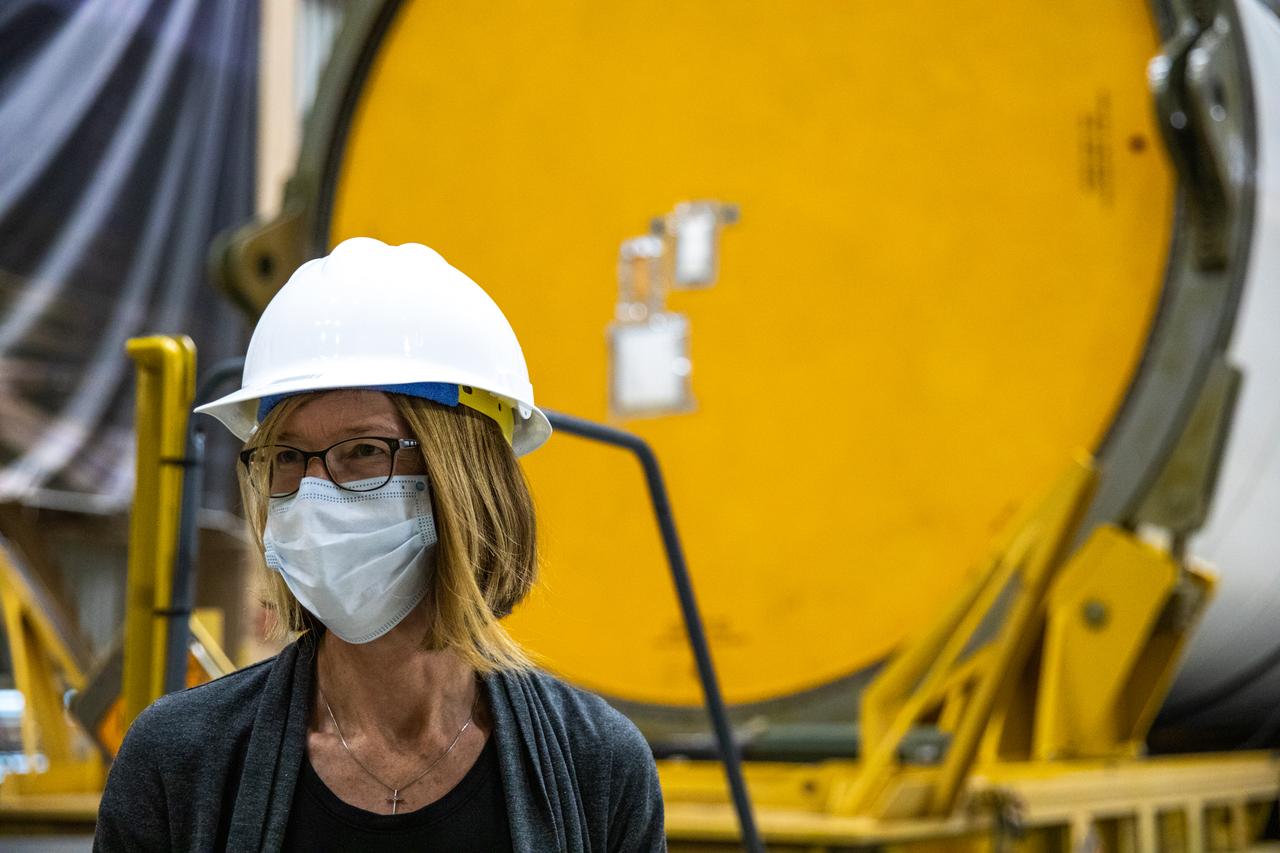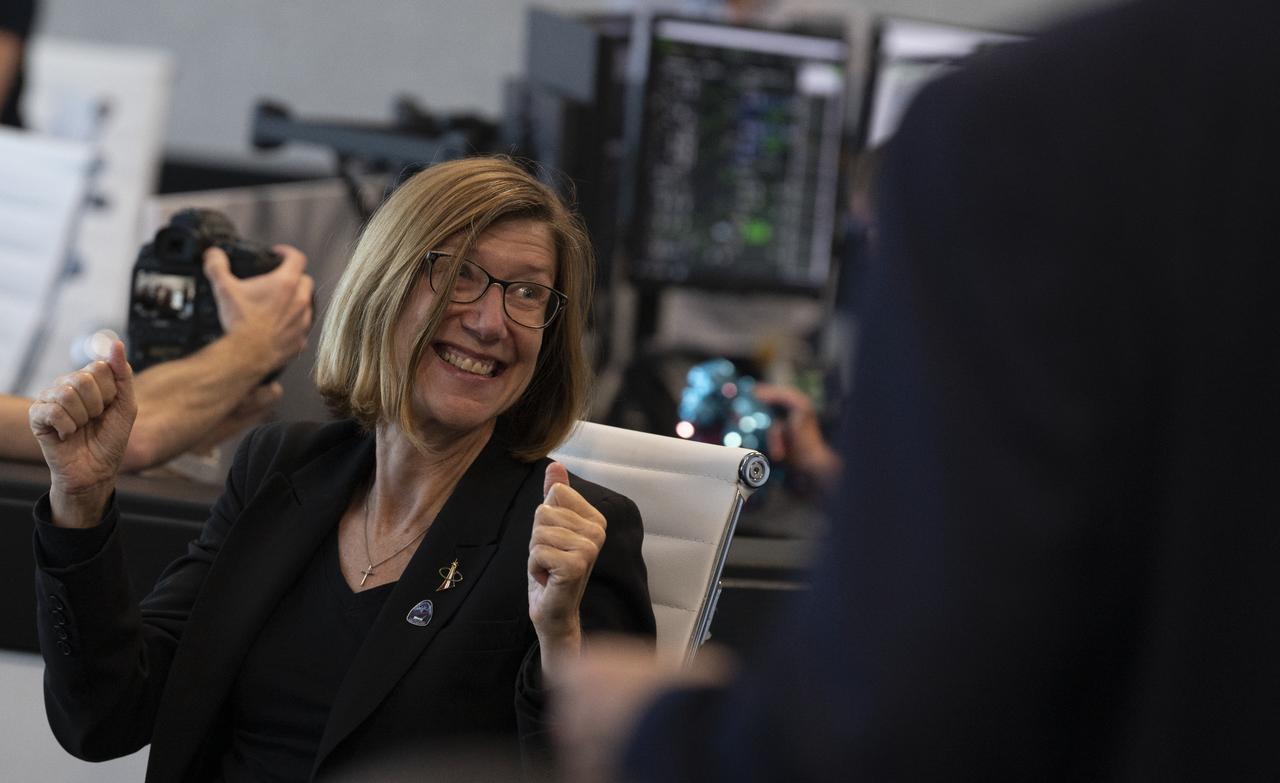NASA wants a return to the moon in 2024. New human spaceflight chief makes no guarantees.

Putting astronauts back on the moon by 2024 will be no small feat, and NASA's new human spaceflight chief Kathy Lueders has been careful not to make any promises she may not be able to keep.
"I don't have a crystal ball," Lueders said in a teleconference with reporters on June 18, when asked about the feasibility of a 2024 moon landing. "I wish I knew that answer. That'd make my job a lot easier. We're going to try," she said.
Lueders, who recently became the associate administrator for NASA's Human Exploration and Operations Mission Directorate after Doug Loverro's abrupt resignation, was a bit more pragmatic about the timeline of NASA's Artemis program than her predecessor. While Lueders seems cautiously optimistic about getting astronauts to the moon by 2024, Loverro was confident and unwavering in his assertion that NASA would make the deadline. At a NASA town hall in December, Loverro even said that "it is going to be easy to make this happen."
Related: Putting astronauts on the moon in 2024 is a tall order, NASA says
Before Lueders became the head of human spaceflight at NASA, she served as the manager of NASA's Commercial Crew Program, where she oversaw the first flights of a private crew-carrying spacecraft to the International Space Station.
After a successful uncrewed test flight of SpaceX's Crew Dragon spacecraft in March 2019 — and Boeing's unsuccessful first attempt at doing the same with its Starliner spacecraft nine months later — the first commercial crew mission, SpaceX's Demo-2, successfully delivered NASA astronauts Bob Behnken and Doug Hurley to the space station in May. (Meanwhile, Boeing is preparing for a second attempt at the uncrewed test flight before astronauts can start flying on Starliner.)
Those missions have faced years of delays and other challenges. When NASA created its Commercial Crew Program in 2010, the agency planned to have its astronauts regularly riding private vessels to and from the space station by 2015. Now, five years later, the first commercial crew mission has only just arrived at the orbiting lab.
Breaking space news, the latest updates on rocket launches, skywatching events and more!
Related: NASA completes investigation on flawed Boeing Starliner capsule test flight

"It's very important to have an aggressive goal," Lueders said in the June 18 teleconference. "We had an aggressive goal in commercial crew, and I think that aggressive goal ensured that we were able to accomplish things as quickly as we could."
"But I also think what's important is when you come across technical challenges ... you're focused on making sure you're achieving your aggressive goal in the right manner," Lueders added. "Yes, it's taken us a little bit longer to be able to get Bob and Doug up there. But I do think we've done it carefully, and doing it right is better than doing it faster."
While ensuring the safety of its astronauts is NASA's No. 1 priority when it comes to human spaceflight missions, the agency must also take extra precautions now to protect its workforce on Earth from the coronavirus pandemic. Due to the spread of COVID-19, the disease caused by the novel coronavirus, NASA has already faced delays in the testing of its new Space Launch System (SLS) megarocket and Orion crew capsule, which the agency plans to use for its Artemis moon missions.
Related: NASA suspends work on SLS megarocket and Orion capsule due to coronavirus outbreak
"I just went through a mission where the last two months of it, we were in COVID," Lueders said, referring to the SpaceX Demo-2 mission. "It is tough to work during this period of time, but we have a strong team. And I know that they're happy to have a goal and they're happy to be moving towards the goal. And it's a pretty great goal for us to be working towards."
"If things come up along the way, where technically it takes us longer... then we'll go figure it out. But right now the team's trying. It is tough," Lueders added.
Email Hanneke Weitering at hweitering@space.com or follow her @hannekescience. Follow us on Twitter @Spacedotcom and on Facebook.

Hanneke Weitering is a multimedia journalist in the Pacific Northwest reporting on the future of aviation at FutureFlight.aero and Aviation International News and was previously the Editor for Spaceflight and Astronomy news here at Space.com. As an editor with over 10 years of experience in science journalism she has previously written for Scholastic Classroom Magazines, MedPage Today and The Joint Institute for Computational Sciences at Oak Ridge National Laboratory. After studying physics at the University of Tennessee in her hometown of Knoxville, she earned her graduate degree in Science, Health and Environmental Reporting (SHERP) from New York University. Hanneke joined the Space.com team in 2016 as a staff writer and producer, covering topics including spaceflight and astronomy. She currently lives in Seattle, home of the Space Needle, with her cat and two snakes. In her spare time, Hanneke enjoys exploring the Rocky Mountains, basking in nature and looking for dark skies to gaze at the cosmos.
